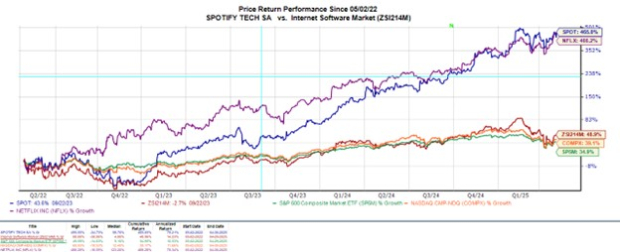Dollar Index Rises Amid Economic Data Releases and Market Dynamics
The dollar index (DXY00) increased by +0.24% on Wednesday. A slump in stocks heightened demand for liquidity in dollars. Additionally, news revealed that the Q1 core PCE price index exceeded expectations, signaling a hawkish stance for Fed policy and supporting the dollar. However, the dollar retreated from its highs amid signs of weakness in the U.S. labor market, as the April ADP employment change rose only +62,000—significantly below the forecast of +115,000 and marking the smallest increase in nine months. Moreover, the dollar faced pressure after the U.S. economy contracted more than anticipated in Q1.
The U.S. Q1 GDP declined by -0.3% (quarter-over-quarter annualized), which was worse than the expected decline of -0.2%. This marks the steepest rate of contraction in three years. Meanwhile, the core PCE price index rose +3.5% quarter-over-quarter, outpacing expectations of +3.1%.
The employment cost index for Q1 increased by +0.9%, aligning with expectations. The MNI Chicago PMI for April fell -3.0 to 44.6, underperforming expectations of 45.9. However, personal spending in March rose +0.7% month-over-month, surpassing the forecast of +0.6%. Personal income for May also rose by +0.5%, beating expectations of +0.4%.
The March core PCE price index, which the Fed prefers as an inflation metric, increased by +2.6% year-over-year, meeting expectations and reflecting the slowest increase in nine months. Pending home sales for March surged by +6.1% month-over-month, considerably exceeding the forecast of +1.0% and marking the largest gain in 15 months.
Market speculation indicates an 8% chance of a -25 bp rate cut following the May 6-7 FOMC meeting, a significant drop from last week’s 30% prediction.
In the foreign exchange market, EUR/USD (^EURUSD) fell by -0.41% on Wednesday. The euro faced moderate losses following the release of German April consumer prices, which rose by the smallest amount in seven months—a dovish indicator for ECB policy. Losses in the euro were somewhat mitigated after Eurozone Q1 GDP expanded more than expected, and German March retail sales declined less than anticipated.
Eurozone Q1 GDP rose +0.4% quarter-over-quarter and +1.2% year-over-year, surpassing expectations of +0.2% and +1.1%, respectively. Concurrently, German March retail sales fell -0.2% month-over-month, a smaller drop compared to the expected -0.4%.
The German April CPI (EU harmonized) increased by +2.2% year-over-year, exceeding the anticipated +2.1% but marking the slowest growth pace in seven months. Swaps indicate a 100% probability of a -25 bp rate cut by the ECB at the upcoming June 5 policy meeting.
USD/JPY (^USDJPY) rose by +0.32% on Wednesday. The yen faced pressure from disappointing Japanese economic data, including March industrial production and retail sales, which are dovish for BOJ policy. Expectations that the BOJ will maintain its current monetary policy in Thursday’s meeting further underpinned this trend. Although T-note yields declined, limiting losses in the yen, the economic indicators weighed heavily on market sentiment.
Japan’s March industrial production fell by -1.1% month-over-month, worse than the forecast of -0.4%. March retail sales also declined by -1.2%, which was greater than the anticipated -0.7% and represented the largest drop in six months.
In commodities, June gold (GCM25) closed down -14.50 (-0.43%), and May silver (SIK25) fell by -0.744 (-2.24%). Prices for precious metals settled lower due to a stronger dollar, which negatively impacted their value. Tariff concerns eased slightly after President Trump signed an executive order lifting tariffs on foreign parts in U.S. car and truck manufacturing, which also reduced safe-haven demand for precious metals. Furthermore, the rise in the core PCE index might discourage the Fed from cutting rates, creating additional headwinds for precious metals.
Silver prices were notably affected by a -5% plunge in COMEX copper, which fell to a two-and-a-half-week low. Weak industrial demand signals from China contributed to declines in both copper and silver, following a drop in China’s April manufacturing PMI to 49.0, down -1.5 from the previous month and indicating the steepest contraction in 16 months. Additionally, the U.S. Q1 GDP contraction amplified concerns over weak economic growth, negatively impacting demand for industrial metals.
Concerns regarding the ongoing U.S.-China trade war and its implications for global economic growth have increased safe-haven demand for gold. President Trump stated that the U.S. would not lower tariffs on China unless significant concessions were made. Geopolitical tensions in the Middle East, particularly involving Israel and Hamas as well as the U.S. and Houthi conflicts, have further bolstered demand for precious metals.
On the date of publication, Rich Asplund did not have (either directly or indirectly) positions in any of the securities mentioned in this article. All information and data in this article is solely for informational purposes. For more information, please view the Barchart Disclosure Policy here.
The views and opinions expressed herein are the views and opinions of the author and do not necessarily reflect those of Nasdaq, Inc.
